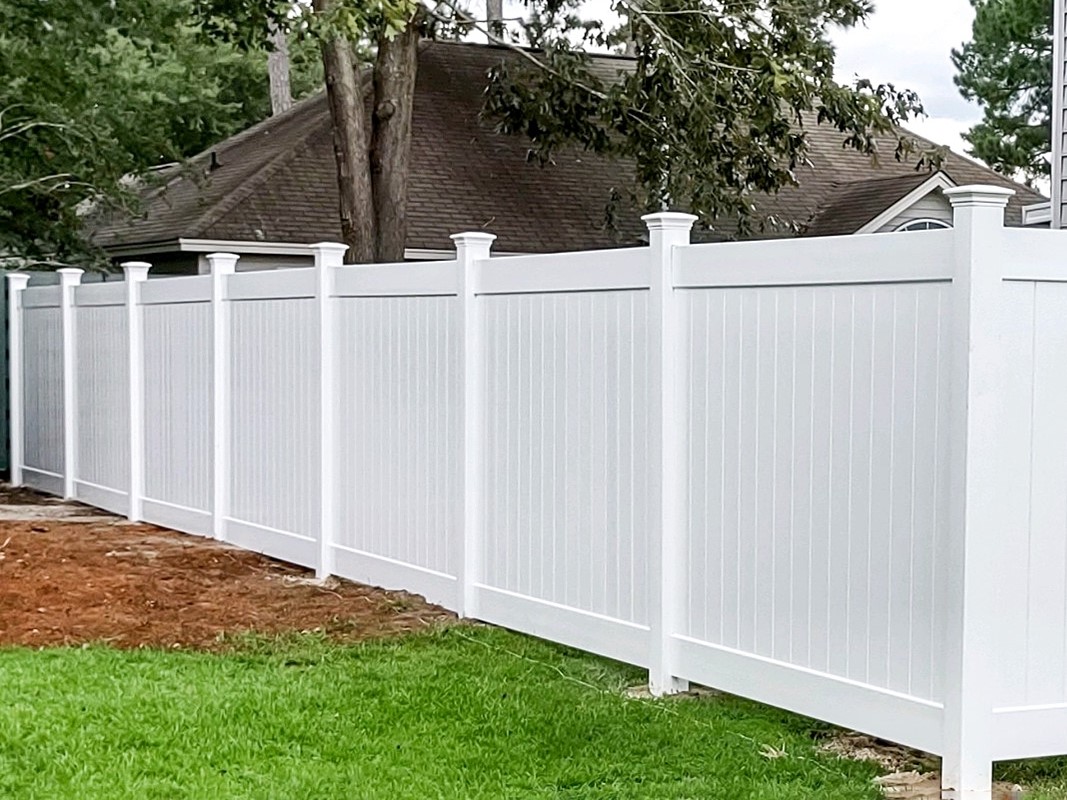A fence isn’t just a boundary—it’s a chance to enhance your home’s privacy, security, and curb appeal. With so many types of fencing materials available, choosing the best fence material for your needs can feel overwhelming.
When it comes to new fence installation, homeowners often face the challenge of choosing the strongest fence that can withstand various weather conditions and stand the test of time. The type of fencing material you choose can greatly affect the durability, lifespan, and maintenance of your new fence.
Let’s explore the most popular fence material options and help you determine which type of fencing material is best for your property.
Vinyl Fencing
Vinyl makes big promises about being maintenance-free, and in some ways, it delivers. You won’t deal with rot or need to repaint. But here’s what the brochures don’t tell you—vinyl becomes brittle over time, especially in cold climates.
One of the biggest advantages of vinyl fencing is its incredible durability and long-lasting performance. Vinyl fencing is virtually maintenance-free. It won’t rot, warp, or decay, so there’s no need to stain, paint, or seal it. All vinyl fencing requires is an occasional light cleaning with mild soap and water to remove dirt and debris.
Wood Fencing
Wood remains one of the most popular fence material options for its timeless appeal and natural warmth. Cedar, redwood, and pine are common choices. Wood fights a constant war on multiple fronts: moisture, insects, and UV damage. Even pressure-treated lumber eventually loses its protective compounds.
To find the appropriate fence material sales according to your priorities and the climate of your area, it’s advised to find a reliable fence provider. They will have all the fence materials available and can provide you with the best fence material for your property that will last for years.
Composite Fencing
Composite fencing is an environmentally friendly alternative to traditional timber fencing. Engineered from recycled plastic and wood fibers, composite fences are durable, low maintenance with no painting or staining required, easy to install, and both neighbors get the ‘good side’.
Composite fencing blends recycled wood fibers and plastic, creating a product with the appearance of wood and the strength of synthetic materials. Extremely durable, eco-friendly, minimal maintenance.
Bamboo Fencing
Bamboo fencing is an eco-conscious, rapidly renewable material providing distinctive visual interest and privacy. Bamboo fencing is a sustainable, strong, unique aesthetic. Needs treatment to extend lifespan in harsh climates.
It can be used in various forms, including roll-up screens and more elaborate, constructed panels, and can be customized with climbing plants for a softer look. While durable for up to 20 years with proper treatment and care, bamboo’s flammability is lower than dry wood due to its high silica and water content.
Masonry Fencing
Masonry fences are exterior enclosures built from individual units of brick, concrete blocks, stucco, or natural stone. Masonry fencing requires vastly different tools and skills than traditional fencing.
While traditional fencing is held together with screws, the bricks or stones for masonry fencing are laid in a staggered pattern and secured with mortar. Masonry fences are commonly used for residential properties and come in several different designs.

